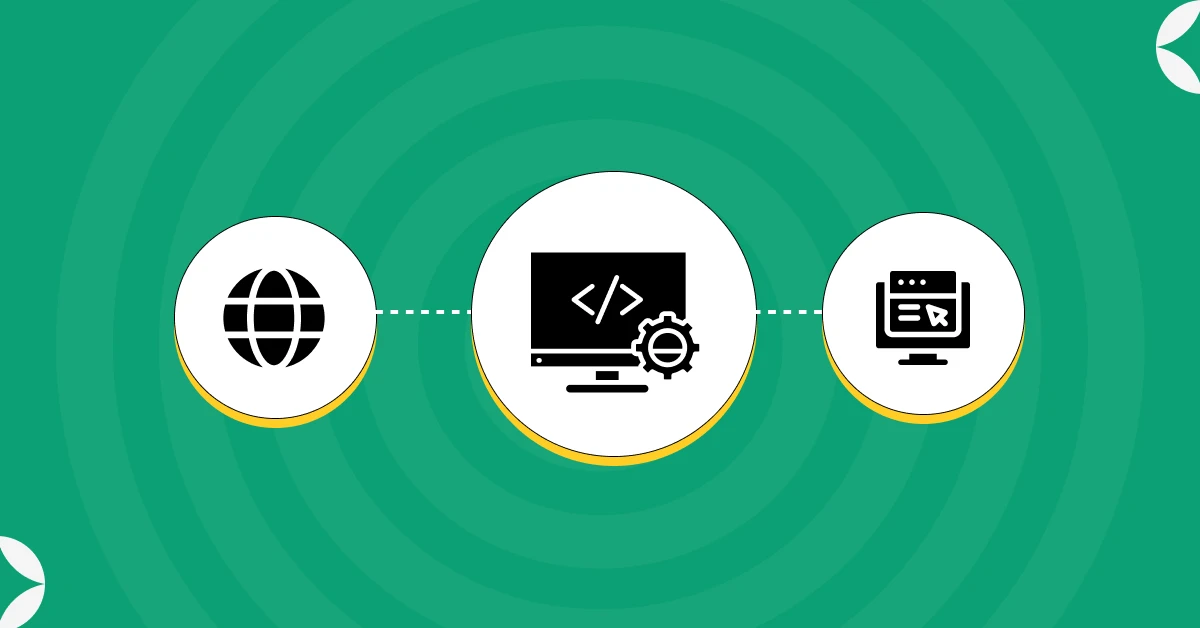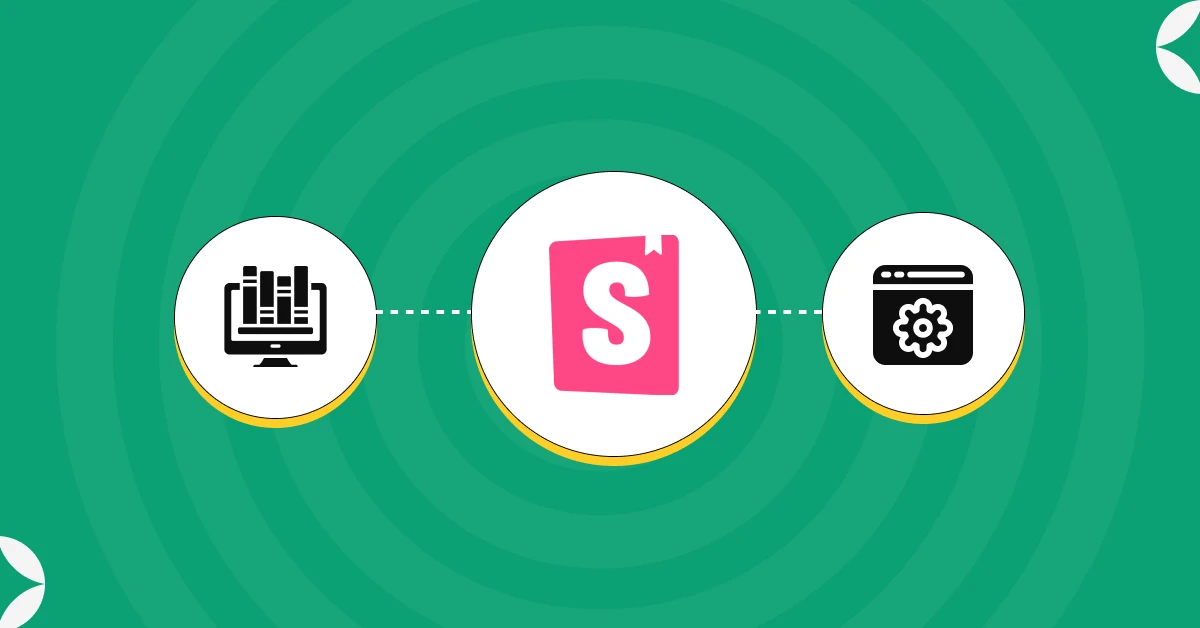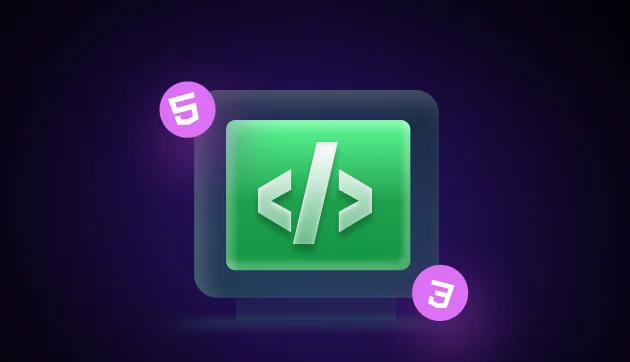
Web Components in Frontend Development: A Cheat Sheet to Coding in 2025
Dec 31, 2024 6 Min Read 2186 Views
(Last Updated)
As a full-stack developer, when you are working on a project for a longer period, you’ll start to notice that you are typing a particular format of code again and again and again.
This is typically the case in frontend development as you’ll be reusing a lot of tags. But do you have to type it out every time? Well, with web components in frontend development, you can easily skip the typing part.
But what exactly do we mean by web components in frontend development? The answer lies in this article. So, make sure to read till the end to understand why web components in frontend development are important in this current age and time.
So, without further ado, let’s get started.
Table of contents
- What is Frontend Development?
- What are Web Components?
- Why Web Components in Frontend Development?
- Simplified Code Management
- Consistency Across Your Project
- Use Across Different Frameworks
- Future-Proofing Your Work
- Enhancing Performance
- The Future Looks Modular
- Challenges and Considerations for Web Components in Frontend Development
- Learning Curve
- Browser Support
- Integration with Other Libraries and Frameworks
- Tooling and Development Environment
- Styling and Theming
- Navigating these Challenges
- Tools and Libraries for Web Components in Frontend Development
- Polymer
- Lit
- Stencil
- Storybook
- Conclusion
- FAQs
- Why use Web Components in front-end development?
- What is the Shadow DOM?
- How do Web Components fit into the modern web development architecture?
- Are Web Components SEO-friendly?
What is Frontend Development?

Before we address our main topic of web components in frontend development, let us first understand what frontend development is.
Frontend development is the process of creating the parts of a website or application that you can see and interact with directly. It involves using languages like HTML for structuring content, CSS for styling, and JavaScript for adding interactive elements.
A front-end developer’s job is to build and design layouts, buttons, images, and navigation menus, ensuring everything looks good and works smoothly across different devices like smartphones and computers.
This work is crucial because it directly affects how users perceive and interact with a website or app, aiming to provide a seamless and enjoyable experience.
Learn: What does a Front End Developer do? A Complete Guide
What are Web Components?

Web Components are a suite of different technologies that allow you to create custom, reusable HTML tags whose functionality is encapsulated away from the rest of your code. This technology is built into the browser and includes four main specifications:
- Custom Elements: These are fully valid HTML elements with custom templates, behaviors, and tag names.
- Shadow DOM: Provides encapsulation for the JavaScript and CSS in a web component. The Shadow DOM ensures that styles and scripts do not leak into the outer document or affect the global scope.
- HTML Templates: The
<template>and<slot>tags allow you to write markup templates that are not rendered until cloned and added to the document via JavaScript. - HTML Imports: This specification was intended for importing HTML documents into other documents, though it is now being replaced by ES Modules as the preferred way to include components.
Learn More: Web Components: A Deep Dive into Reusable and Custom Elements
Why Web Components in Frontend Development?

Now that you understand the keywords in web components in frontend development, let us move further.
But before we do so, it is important that you know full-stack development at a basic level. If not, consider enrolling in an online certified full-stack development course by a recognized institution that strengthens your full-stack fundamentals.
Let’s dive deeper into why you might want to consider using Web Components in frontend development. They might sound technical, but the concept behind them is quite straightforward and has numerous benefits for developing websites and applications.
1. Simplified Code Management
Imagine you’re building a complex machine and can use pre-made, interchangeable parts that fit perfectly every time you need them.
Web Components in frontend development work similarly for full-stack development. They help you manage and maintain your code by letting you use these independent parts—components—that you can reuse across different parts of your website or even in different projects.
This means less code to write, less testing, and less room for errors.
2. Consistency Across Your Project
Have you ever noticed that sometimes buttons or forms look different across various pages of the same website? Web Components in frontend development help solve this problem.
Because they are encapsulated, meaning they keep their styles and behaviors to themselves, they ensure that no matter where you use your custom element, it looks and behaves the same way.
This is especially useful for large projects with many developers, as it keeps the user interface consistent for all users.
Find Out a Comprehensive List of Project Ideas for Frontend Development
3. Use Across Different Frameworks
One of the real beauties of Web Components is their compatibility. Once you create a component, you can use it almost anywhere, regardless of the rest of the technology stack.
Whatever frontend development framework your project utilizes, Web Components in frontend development fit right in without any issues. This flexibility is great for avoiding lock-in with a specific technology and allows you to bring together the best tools for the job.
4. Future-Proofing Your Work
Web Components in frontend development are part of the web standard, which means they are native to the web itself. Unlike other libraries and frameworks that may come and go, Web Components in frontend development are likely to be supported for a very long time.
By using these, you’re essentially future-proofing your application against the rapidly changing landscape of frontend development.
5. Enhancing Performance
When you use Web Components in frontend development, your web applications tend to load faster. Since they encourage the use of reusable and minimal code, there’s less JavaScript to process and less CSS to render.
They are also lazy-loaded, meaning that they are only loaded when needed. This can make a significant difference in performance, particularly on mobile devices or in areas with slower internet connections.
Also Read: Master JavaScript Frontend Roadmap: From Novice to Expert
6. The Future Looks Modular
With Web Components in frontend development, the future looks more modular, efficient, and manageable. You will have the power to build complex web applications piece by piece, ensuring high quality and maintainability while keeping your projects agile and adaptable.
As you adopt Web Components in frontend development, you’ll find that they not only make your development process smoother but also enhance your ability to deliver excellent user experiences. The future is about building smarter, not harder, and Web Components are a key piece of this new approach.
By embracing Web Components in frontend development, you’re not just making your life easier but also ensuring your project is robust, maintainable, and up to date with modern web standards.
Explore: A Complete Guide to HTML and CSS for Beginners
Challenges and Considerations for Web Components in Frontend Development

While Web Components in frontend development bring a lot of advantages to the table, like any technology, they come with their own set of challenges and considerations.
You need to be aware of these potential hurdles before diving in, so you can be better prepared to handle them effectively.
1. Learning Curve
If you’re new to Web Components, there might be a bit of a learning curve. You’ll need to understand how to create and manage these components, which involves some concepts like Shadow DOM, custom elements, and possibly new syntax and APIs.
If you’re used to working with frameworks like React or Angular, you might find it a bit different initially to work directly with these low-level APIs.
Also Read: Use ReactJS to Fetch and Display Data from API – 5 Simple Steps
2. Browser Support
Although modern browsers have come a long way in supporting Web Components, there can still be inconsistencies and bugs in how different browsers handle them.
This means you might need to test your components more thoroughly across browsers to ensure they work smoothly everywhere. This is less of an issue than it was a few years ago, but it’s something to keep in mind, especially if you’re targeting users with older browsers.
3. Integration with Other Libraries and Frameworks
Web Components are designed to be framework-agnostic, which means they should work with any JavaScript framework.
However, the reality can sometimes be more complicated. Integrating Web Components in frontend development or legacy systems can sometimes lead to challenges, especially if those systems use their own component models or have specific ways of handling events and data.
4. Tooling and Development Environment
While there is good tooling available for Web Components, it might not be as mature or extensive as the tooling available for some other technologies like React, Vue, or Angular.
This can affect things like debugging, testing, and building your components. Finding the right tools and setting up an efficient development environment might take some research and experimentation.
5. Styling and Theming
Styling can be a double-edged sword when it comes to Web Components in frontend development. On one hand, the Shadow DOM provides style encapsulation, which is great for preventing styles from leaking into or out of your components.
On the other hand, this can also make it challenging to apply global styles and themes to your components. You might need to adopt new strategies for styling if you want to maintain a consistent look across your application.
Also Read: What is DOM manipulation? Common Tasks and Elements
Navigating these Challenges
Despite these challenges, many developers find that the benefits of Web Components—like reusability, encapsulation, and standardization—outweigh the difficulties.
If you’re considering Web Components in frontend development, it’s a good idea to start small, perhaps by integrating a few components into an existing project to get a feel for the workflow and challenges.
Also Learn: Essential Front-End Developer Skills
Tools and Libraries for Web Components in Frontend Development

As you delve into the world of Web Components in frontend development, you’ll find that several tools and libraries can help simplify the process of creating and managing these components.
These resources enhance the development experience by providing additional functionality, simplifying complex tasks, and offering shortcuts that make your coding more efficient.
Here’s a rundown of some of the most popular tools and libraries for web components in frontend development:
1. Polymer
Polymer, developed by Google, was one of the first libraries to help build Web Components. While Polymer itself is no longer under active development, its legacy in the Web Components world is significant.
It provided a set of tools and elements that made it easier to create custom, reusable components. If you come across older projects or resources, you might still see references to Polymer.
2. Lit
Lit (formerly known as LitElement) is a simple library for building fast, lightweight Web Components. It’s one of the most popular choices today due to its modern approach and efficient updating system.
Lit helps you define components with minimal boilerplate, making your code cleaner and easier to understand. It uses HTML templates and adds reactive properties that update your component’s UI automatically when your data changes.
This makes it a great choice if you’re looking for something powerful yet straightforward.
3. Stencil
Stencil is a compiler that helps you build Web Components with a set of modern features like TypeScript integration, asynchronous rendering, and a virtual DOM.
It’s designed to work well with other frameworks and libraries, making it a good choice if you’re integrating Web Components into a larger application. Stencil also focuses on performance, ensuring that the components you build are optimized and fast.
4. Storybook
While not specific to Web Components, Storybook is a powerful tool for developing and organizing UI components in isolation.
It allows you to build components and view them in a sandbox environment, which can be incredibly useful for testing and showcasing component designs without needing to integrate them into your main project immediately.
Storybook supports Web Components, making it a valuable tool for building and sharing your UI library.
Using these tools and libraries can greatly enhance your experience working with Web Components in frontend development.
If you want to learn more about web components in frontend development, then consider enrolling in GUVI’s Certified Full Stack Development Course which not only gives you theoretical knowledge but also practical knowledge with the help of real-world projects.
Also Read: 24 Best Frontend Developer Interview Questions & Answers
Conclusion
In conclusion, Web Components in frontend development represent a significant evolution, offering a modular, standardized approach that enhances reusability and maintainability across web projects.
They allow developers to create custom, encapsulated components that can be used across different frameworks and projects without compatibility issues.
While they come with challenges such as a learning curve and browser inconsistencies, the benefits like performance optimization, streamlined development, and future-proofing applications make them valuable assets.
Also Read About Frontend Developer Salary in India & USA [2025]
FAQs
1. Why use Web Components in front-end development?
They promote code reusability, maintain consistency across web applications, and reduce the risk of CSS/JS conflicts across components, streamlining the development process.
2. What is the Shadow DOM?
Shadow DOM is a part of the Web Components technology stack that allows for DOM tree encapsulation. This means styles and scripts defined inside a Web Component do not affect the rest of the page.
3. How do Web Components fit into the modern web development architecture?
Web Components fit seamlessly as building blocks that encapsulate functionality and styling, compatible with micro-frontend architectures and component-based frameworks.
4. Are Web Components SEO-friendly?
Yes, when implemented correctly, Web Components can be SEO-friendly, but care must be taken to ensure content is accessible to search engine crawlers.






























Did you enjoy this article?